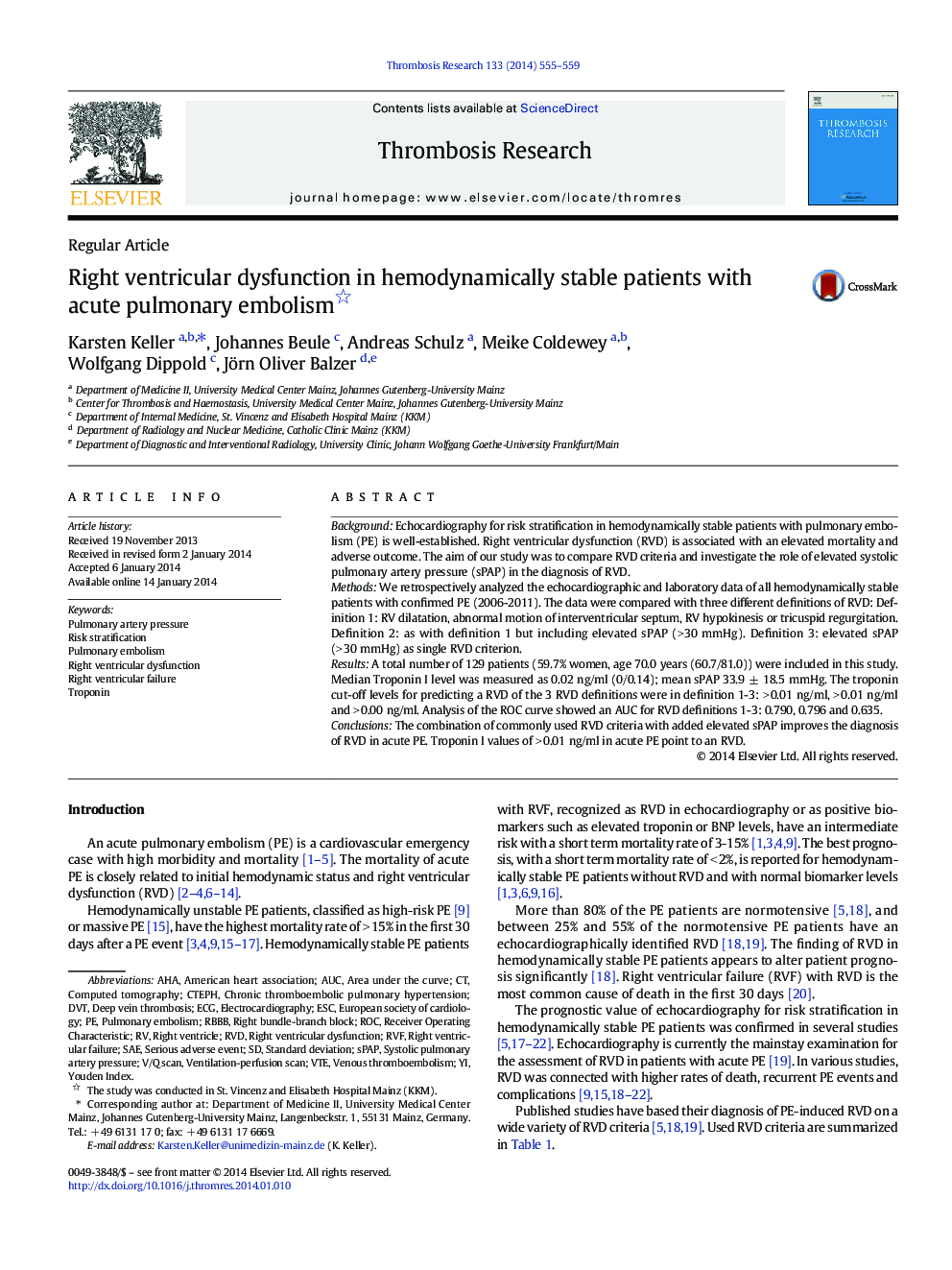| Article ID | Journal | Published Year | Pages | File Type |
|---|---|---|---|---|
| 6001378 | Thrombosis Research | 2014 | 5 Pages |
BackgroundEchocardiography for risk stratification in hemodynamically stable patients with pulmonary embolism (PE) is well-established. Right ventricular dysfunction (RVD) is associated with an elevated mortality and adverse outcome. The aim of our study was to compare RVD criteria and investigate the role of elevated systolic pulmonary artery pressure (sPAP) in the diagnosis of RVD.MethodsWe retrospectively analyzed the echocardiographic and laboratory data of all hemodynamically stable patients with confirmed PE (2006-2011). The data were compared with three different definitions of RVD: Definition 1: RV dilatation, abnormal motion of interventricular septum, RV hypokinesis or tricuspid regurgitation. Definition 2: as with definition 1 but including elevated sPAP (> 30 mmHg). Definition 3: elevated sPAP (> 30 mmHg) as single RVD criterion.ResultsA total number of 129 patients (59.7% women, age 70.0 years (60.7/81.0)) were included in this study. Median Troponin I level was measured as 0.02 ng/ml (0/0.14); mean sPAP 33.9 ± 18.5 mmHg. The troponin cut-off levels for predicting a RVD of the 3 RVD definitions were in definition 1-3: > 0.01 ng/ml, > 0.01 ng/ml and > 0.00 ng/ml. Analysis of the ROC curve showed an AUC for RVD definitions 1-3: 0.790, 0.796 and 0.635.ConclusionsThe combination of commonly used RVD criteria with added elevated sPAP improves the diagnosis of RVD in acute PE. Troponin I values of > 0.01 ng/ml in acute PE point to an RVD.
